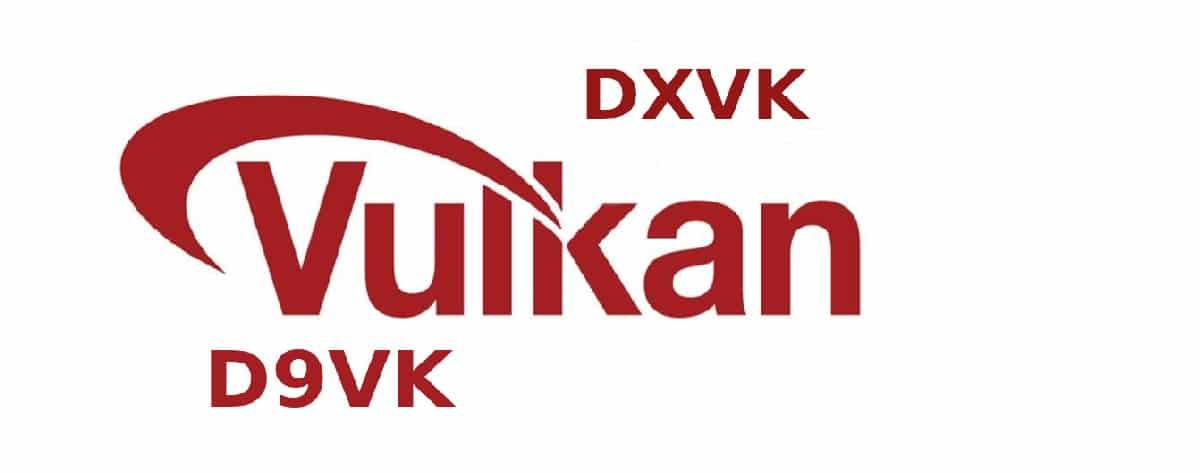
DXVK can be used to run 3D applications and games on Linux using Wine
The new version of the cape DXVK 2.2 is now available and it comes with some very interesting changes, of which we can highlight the compatibility support with D3D11On12, as well as the partial presentation of D3D9, bug fixes and more.
For those who still do not know about DXVK, they should know what it is one of the tools included in the Steam Play function from Steam. It is a fantastic tool thate can convert Microsoft DirectX 11 and DirectX 10 graphics calls to Vulkan, the open source graphics API that is compatible with Linux. To use DXVK, in addition to Wine and Vulkan, you obviously need a Vulkan-compatible GPU.
Main new features of DXVK 2.2
In this new version that is presented of DXVK 2.2 we can find that sAdded support for the D3D11On12 layer, who allows Direct3D 11 to work on top of Direct3D 12. To support D3D12 in new games based on the Unity engine, such as Lego Builder's Journey, DXVK has implemented the ability to create D3D11 devices from D3D12 devices using the D3D11On12CreateDevice function and the ID3D11On12Device API.
Another of the changes that stands out in this new version is the Direct3D 9 implementation introduced support for partial display which allows organizing the display of parts of a window by copying the contents of the backbuffer into system memory and then drawing it to the CPU window. This improves compatibility with game launchers, particularly those based on Microsoft's WPF Toolkit and some visual novels.
This function improves compatibility with game launchers built with Microsoft WPF at the cost of performance degradation. For Direct3D 9, the general behavior of virtual framebuffers (SwapChain) was also improved and support for the d3d9.noExplicitFrontBuffer option was removed.
In addition to this, it is also highlighted that when used with Proton or Wine, by default, the creation of log files stops and the output of diagnostic messages to the console is organized using Wine-specific features, which corresponds to the behavior of vkd3d-proton. To resume creating separate log files, you can set the DXVK_LOG_PATH environment variable.
Of the other changes that stand out:
- Significantly reduced memory consumption when creating D3D11 devices not used in games.
- Fixed an issue where threads were not being destroyed correctly.
- Fixed Vulkan validation errors caused by incorrect layout tracking when enabling feedback loops for a texture.
- Significantly reduced memory usage in situations where games create unused D3D11 devices.
Finally if you are interested in knowing more about it About this new release, you can check the details In the following link.
How to add DXVK support to Linux?
DXVK can be used to run 3D applications and games on Linux using Wine, acting as a higher-performance alternative to Wine's built-in Direct3D 11 implementation that runs on OpenGL.
DXVK requires the latest stable version of Wine to run. So, if you don't have this installed. Now we will only have to download the latest stable package of DXVK, this one we found In the following link.
wget https://github.com/doitsujin/dxvk/releases/download/v2.2/dxvk-2.2.tar.gz
After having made the download now we are going to unzip the package just obtained, this can be done with from your desktop environment or from the terminal itself by executing in the following command:
tar -xzvf dxvk-2.2.tar.gz
Then we access the folder with:
cd dxvk-2.2
And we execute the sh command to run the install script:
sudo sh setup-dxvk.sh install
setup-dxvk.sh install --without-dxgi
When installing DXVK in a prefix of Wine. The advantage is that Wine vkd3d can be used for D3D12 games and DXVK for D3D11 games.
Also, the new script allows the dll to be installed as symbolic links, making it easier to update the DXVK to get more Wine prefixes (you can do this via the –symlink command).
How will you see the folder DXVK contains two other dlls for 32 and 64 bits these we are going to place them according to the following routes.
Where "user" you replace it with the username you use in your Linux distribution.
For 64 bits we put them in:
~/.wine/drive_c/windows/system32/
O
/home/”usuario”/.wine/drive_c/windows/system32/
And for 32 bits in:
~/.wine/drive_c/windows/syswow64
O
/home/”usuario”/.wine/drive_c/windows/system32/